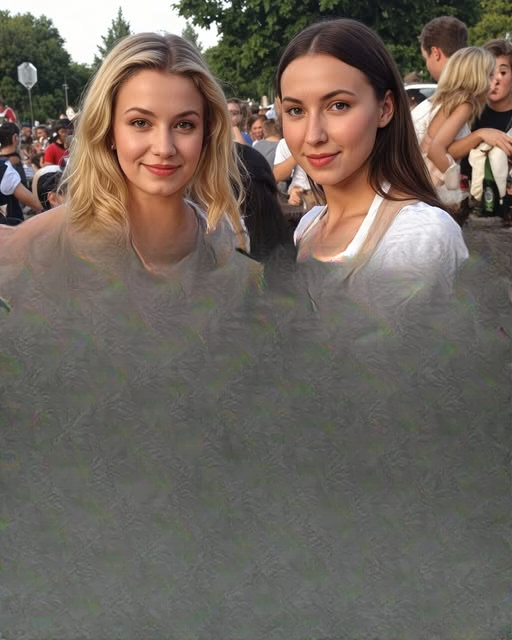
When it comes to conversations about the female body, one of the most common topics that sparks curiosity and debate is breast size. From cultural expectations to fashion choices, society often places emphasis on this aspect of the body, sometimes leading to myths, misinformation, or even insecurities. One of the more unusual questions that occasionally surfaces online is: What exactly causes large breasts in women, and is there any link at all to the vagina?
The short answer is simple: breast size has nothing to do with the va*ina. But to really understand why, it helps to take a closer look at what actually influences breast development, how hormones play a role, and why myths about connections between different parts of the body continue to circulate.
This article dives into the biology, science, and social perspectives of breast size while carefully debunking misconceptions.
What Determines Breast Size?
Breast size is not random; it’s shaped by several natural factors. Below are the primary influences backed by medical research:
1. Genetics
Genetics is perhaps the most powerful factor. If a woman’s mother, grandmother, or close female relatives naturally have large breasts, there’s a high chance she will inherit similar traits. Genes determine how much fatty tissue and glandular tissue develops in the breast, as well as how the body distributes fat overall.
2. Hor*ones
During puberty, hormones surge through the body, triggering many changes. Estrogen, in particular, is key for breast development. It stimulates the growth of glandular tissue and fat in the breast area. Later in life, hormonal fluctuations during pregnancy, menstruation, or while using hormonal medications (such as birth control) can temporarily or permanently increase breast size.
3. Body Fat Percentage
Breasts are composed largely of adipose tissue (fat). That means a woman with a higher overall body fat percentage is more likely to have larger breasts. Conversely, significant weight loss often leads to smaller breasts, since the fat stores in this area decrease.
4. Pregnancy and Breastfeeding
Pregnancy naturally prepares the female body for nursing. During this time, hor*ones cause the breasts to enlarge as milk ducts and mammary glands expand. Many women notice that their breast size remains somewhat larger even after breastfeeding ends, although the degree varies from person to person.
5. Hor*onal Medications and Therapies
Medications that alter hormone levels, such as birth control pills or hormone replacement therapy, can sometimes affect breast size. This happens because they mimic or enhance estrogen levels, which influence breast tissue growth.
6. Medical Conditions
Although rare, some women develop conditions like macromastia or gigantomastia, which cause abnormal and excessive breast enlargement. These conditions are often linked to hormonal imbalances or genetics, and in severe cases, surgery may be necessary to alleviate discomfort.
The Myth: Is Breast Size Connected to the Va*ina?
One persistent myth claims that a woman’s breast size is somehow linked to her va*ina — either in size, shape, or function. This is completely false.
Here’s why:
- Breasts and the va*ina serve different biological purposes. Breasts are primarily involved in producing milk, while the va*ina is part of the reproductive system, involved in childbirth, menstruation, and intercourse.
- The tissues are not the same. Breasts are made of fat and glandular tissue, while the va*ina is made of muscular and mucous membranes.
- Hor*ones influence both, but in unrelated ways. Estrogen affects both breast development and va*inal health, but the outcomes are entirely separate.
- There is no medical or biological evidence that links the size of breasts to the size, shape, sensitivity, or function of the va*ina.
In short: a woman’s breast size has nothing to do with her se*ual activity, va*inal anatomy, or any myth suggesting a connection.
Why Do Myths About Breast Size Persist?
Despite scientific evidence, myths about breast size continue to circulate in popular culture, especially online. Here are a few reasons why:
- Cultural Obsession with Appearance
Societies across the world often put disproportionate emphasis on physical appearance, especially women’s bodies. This focus encourages speculation and myths about what certain features “mean.” - Lack of Sex Education
Many people never receive proper education about human anatomy. Without clear, accurate information, rumors and misconceptions easily take hold. - Media Influence
Movies, TV shows, and even advertisements often exaggerate or stereotype women based on breast size. These portrayals reinforce false ideas rather than scientific truth. - Curiosity and Misinformation Online
In the digital age, people turn to the internet for quick answers. Unfortunately, not all sources are reliable, and myths spread much faster than corrections.
The Social and Emotional Impact of Breast Size
Beyond biology, breast size can significantly affect how women feel about themselves and how they are perceived by others.
- Body Image: Women with larger breasts may feel objectified or face unwanted attention, while those with smaller breasts may feel pressured to meet unrealistic standards.
- Fashion and Comfort: Finding clothing or undergarments that fit properly can be challenging for women with very large or very small breasts.
- Health Considerations: Larger breasts can sometimes cause physical discomfort, such as back or shoulder pain. In these cases, some women opt for reduction surgery for relief.
Understanding the natural diversity of the human body is key. There is no “ideal” breast size — health, comfort, and self-confidence matter far more.
Breaking Down the Science vs. the Myths
| Feature | Breasts | Va*ina |
|---|---|---|
| Function | Milk production & nourishment | Reproduction, childbirth, menstruation |
| Composition | Fat & glandular tissue | Muscular & mucous membranes |
| Hormonal Role | Influenced by estrogen & progesterone | Influenced by estrogen & progesterone |
| Size Link | None | None |
This table clearly illustrates the lack of connection between breast size and va*inal anatomy.
Promoting Healthy Understanding
When discussing topics like breast size, it’s important to approach them with a mindset rooted in science and respect. Here are some takeaways:
- Embrace Diversity: Women’s bodies come in all shapes and sizes, and that diversity is natural and beautiful.
- Avoid Comparisons: Comparing oneself to unrealistic media images can harm self-esteem.
- Focus on Health: Rather than worrying about size, women should focus on breast health, such as regular check-ups and awareness of changes that could indicate medical issues.
- Educate Others: Sharing accurate information helps reduce stigma and dispel harmful myths.
Final Thoughts
A woman’s breast size is shaped by genetics, hormones, body fat, and life events like pregnancy — not by her va*ina, not by her se*ual activity, and not by myths passed down through culture or the internet.
By moving past misconceptions and focusing on real science, we can better appreciate the diversity of the female body. Understanding the truth empowers women to feel confident, promotes healthier conversations, and shifts focus from appearance to overall well-being.
Br*ast size — whether small, medium, or large — is just one of many natural variations in human anatomy. What matters most is not how breasts look, but how healthy and comfortable a woman feels in her own skin.
As we continue to challenge myths and embrace scientific knowledge, we take one step closer to a society that values women for more than their appearance — a society that celebrates individuality, health, and respect.




